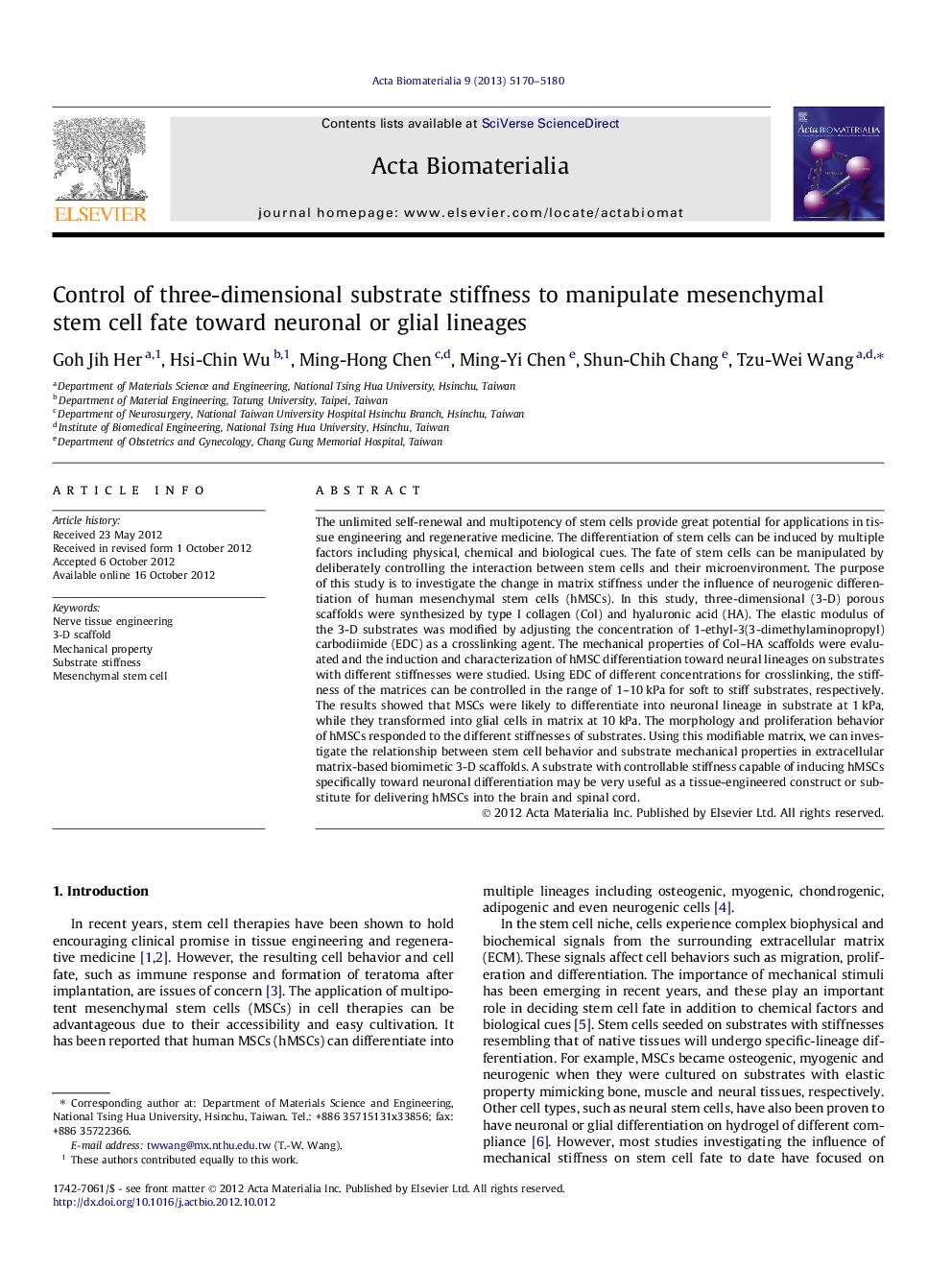| کد مقاله | کد نشریه | سال انتشار | مقاله انگلیسی | نسخه تمام متن |
|---|---|---|---|---|
| 840 | 67 | 2013 | 11 صفحه PDF | دانلود رایگان |

The unlimited self-renewal and multipotency of stem cells provide great potential for applications in tissue engineering and regenerative medicine. The differentiation of stem cells can be induced by multiple factors including physical, chemical and biological cues. The fate of stem cells can be manipulated by deliberately controlling the interaction between stem cells and their microenvironment. The purpose of this study is to investigate the change in matrix stiffness under the influence of neurogenic differentiation of human mesenchymal stem cells (hMSCs). In this study, three-dimensional (3-D) porous scaffolds were synthesized by type I collagen (Col) and hyaluronic acid (HA). The elastic modulus of the 3-D substrates was modified by adjusting the concentration of 1-ethyl-3(3-dimethylaminopropyl) carbodiimide (EDC) as a crosslinking agent. The mechanical properties of Col–HA scaffolds were evaluated and the induction and characterization of hMSC differentiation toward neural lineages on substrates with different stiffnesses were studied. Using EDC of different concentrations for crosslinking, the stiffness of the matrices can be controlled in the range of 1–10 kPa for soft to stiff substrates, respectively. The results showed that MSCs were likely to differentiate into neuronal lineage in substrate at 1 kPa, while they transformed into glial cells in matrix at 10 kPa. The morphology and proliferation behavior of hMSCs responded to the different stiffnesses of substrates. Using this modifiable matrix, we can investigate the relationship between stem cell behavior and substrate mechanical properties in extracellular matrix-based biomimetic 3-D scaffolds. A substrate with controllable stiffness capable of inducing hMSCs specifically toward neuronal differentiation may be very useful as a tissue-engineered construct or substitute for delivering hMSCs into the brain and spinal cord.
Figure optionsDownload high-quality image (125 K)Download as PowerPoint slide
Journal: Acta Biomaterialia - Volume 9, Issue 2, February 2013, Pages 5170–5180